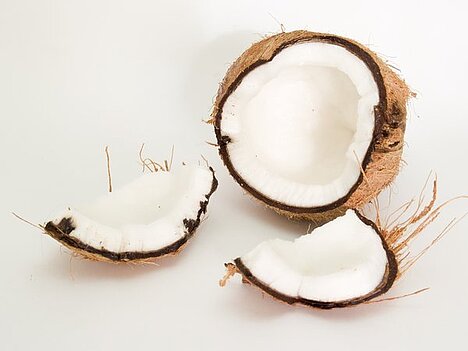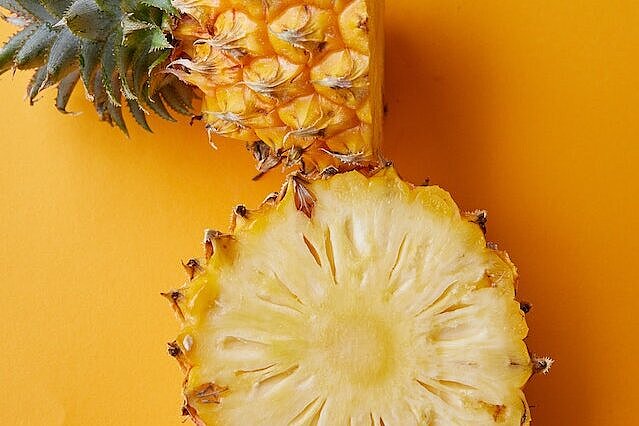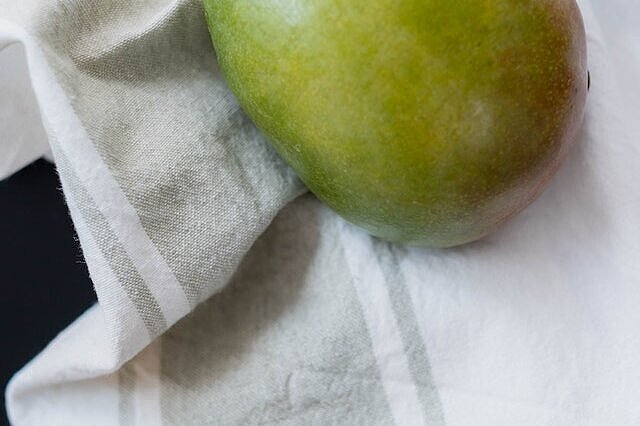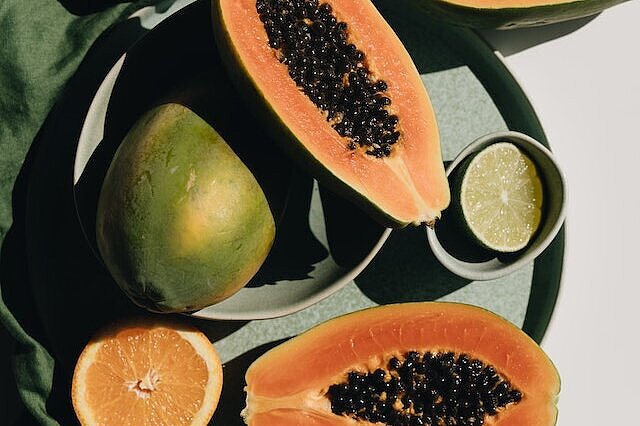Coconut

The benefits of coconut for dogs
Coconut contains many valuable ingredients that can be beneficial for dogs. These include:
- Lauric acid: This fatty acid has antibacterial, antiviral and antifungal properties. It can help prevent or fight infections, strengthen the immune system and care for the skin and coat.
- Medium-chain triglycerides (MCTs): These fats are easy to digest and provide quick energy. They can also improve brain function and prevent or alleviate cognitive disorders.
- Dietary fibers: They promote digestion and can counteract constipation or diarrhea. They also make you feel fuller for longer and can help prevent obesity.
- Vitamins and minerals: Coconut provides vitamin E, vitamin K, potassium, magnesium, iron and zinc, among others. These nutrients support various bodily functions and contribute to general well-being.
The disadvantages of coconut for dogs
Although coconut is healthy, it is not without risks. Too much coconut can lead to side effects such as:
- Weight gain: coconut is very high in calories and can lead to obesity if consumed in excess. This in turn can cause other health problems such as diabetes or joint problems.
- Allergy: Some dogs can have an allergic reaction to coconut. Symptoms can include itching, skin rash, swelling or breathing difficulties. If you suspect an allergy, you should stop giving your dog coconut.
- Gastrointestinal complaints: Some dogs do not tolerate coconut well and may experience diarrhea, vomiting or bloating. This can happen especially if you give your dog too much coconut or too quickly. You should therefore always start with small amounts and observe your dog's reaction.
How you can give your dog coconut
There are various ways in which you can give your dog coconut. These include:
- Coconut oil: This is the fat that is pressed from the flesh of the coconut. You can use it as a dietary supplement or mix it into their food. The recommended dosage is about one teaspoon per 4.5 kilograms of body weight per day.
- Coconut flakes: These are dried pieces of the pulp of the coconut. You can use them as a snack or as a topping for food. The recommended dosage is about one tablespoon per 4.5 kilograms of body weight per day.
- Coconut water: This is the liquid inside the coconut. You can use it as a thirst quencher or as a reward. The recommended dosage is around 30 milliliters per 4.5 kilograms of body weight per day.
Coconut is a delicious and healthy food for dogs that can have many benefits. However, you should always make sure that you don't give your dog too much of it and that he tolerates it well.
If you notice any signs of hypersensitivity or poisoning in your dog, you should see your vet immediately. We are not a substitute for a vet, but we try to be as accurate as possible. Every dog reacts differently and we recommend you get a second opinion or consult your vet if in doubt.
Stay healthy and take good care of your four-legged friend!😊
Similar to Coconut
Pineapple is a plant from the bromeliad family, which is native to South America. The fruit consists of many individual berries that have grown together to form a large cone. The skin is hard and...
What is a mango? A mango is a stone fruit that grows on a tree. It has a yellow to orange color and a sweet taste. The skin of the mango is not edible and must be removed. There is a large pit inside...
Papaya (Carica papaya) is the only species of the plant genus Carica within the melon tree family (Caricaceae). The plant is often referred to as a tree, but is actually a large, herbaceous plant...
Dragon fruit comes from various species of cactus, mainly native to South America but also cultivated in other parts of the world. It is known for its bright pink skin and blotchy white flesh...



